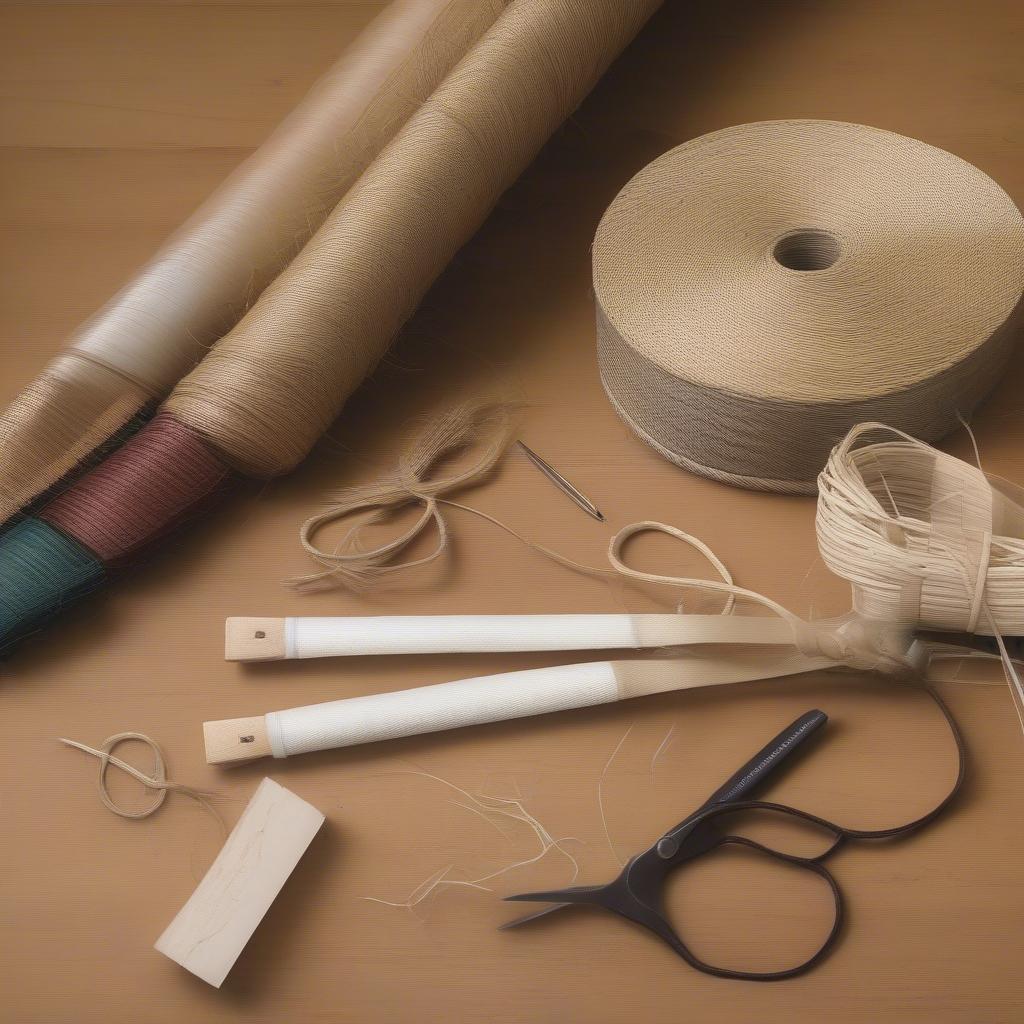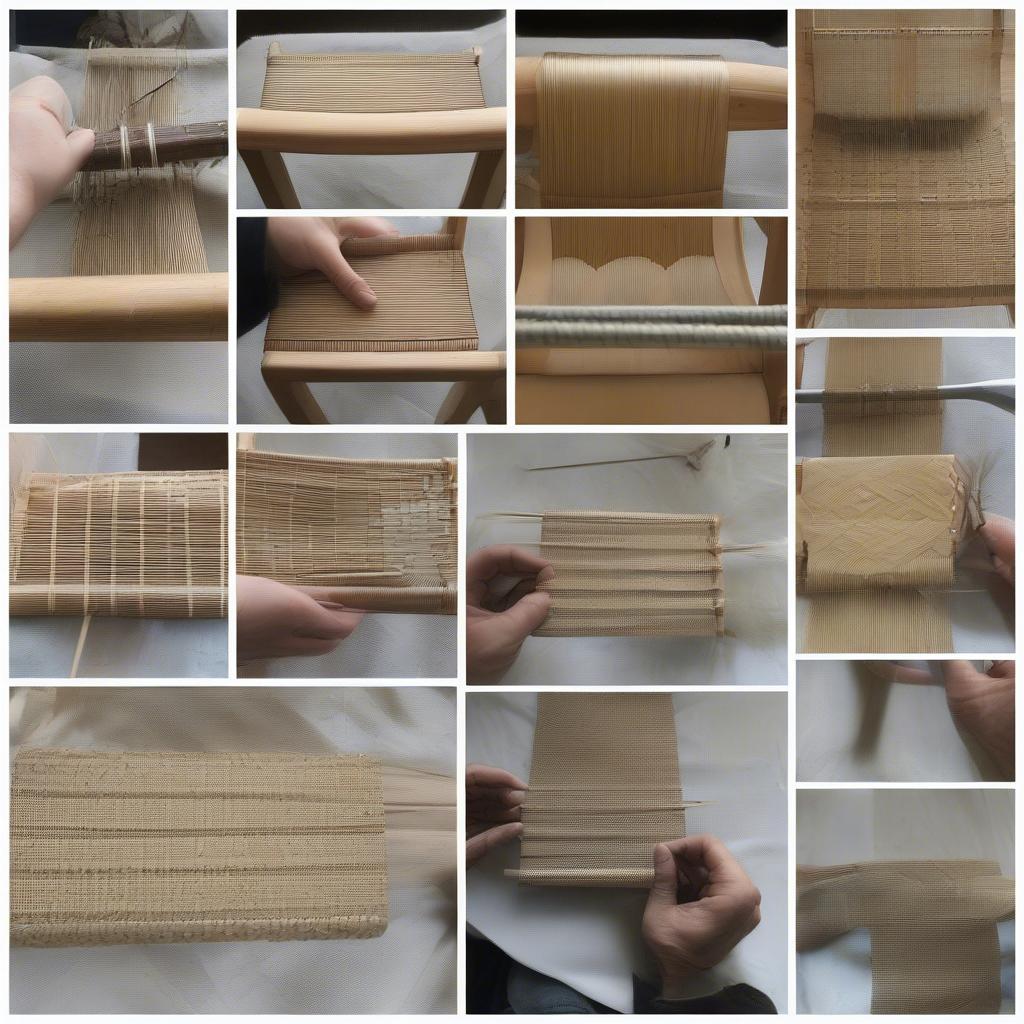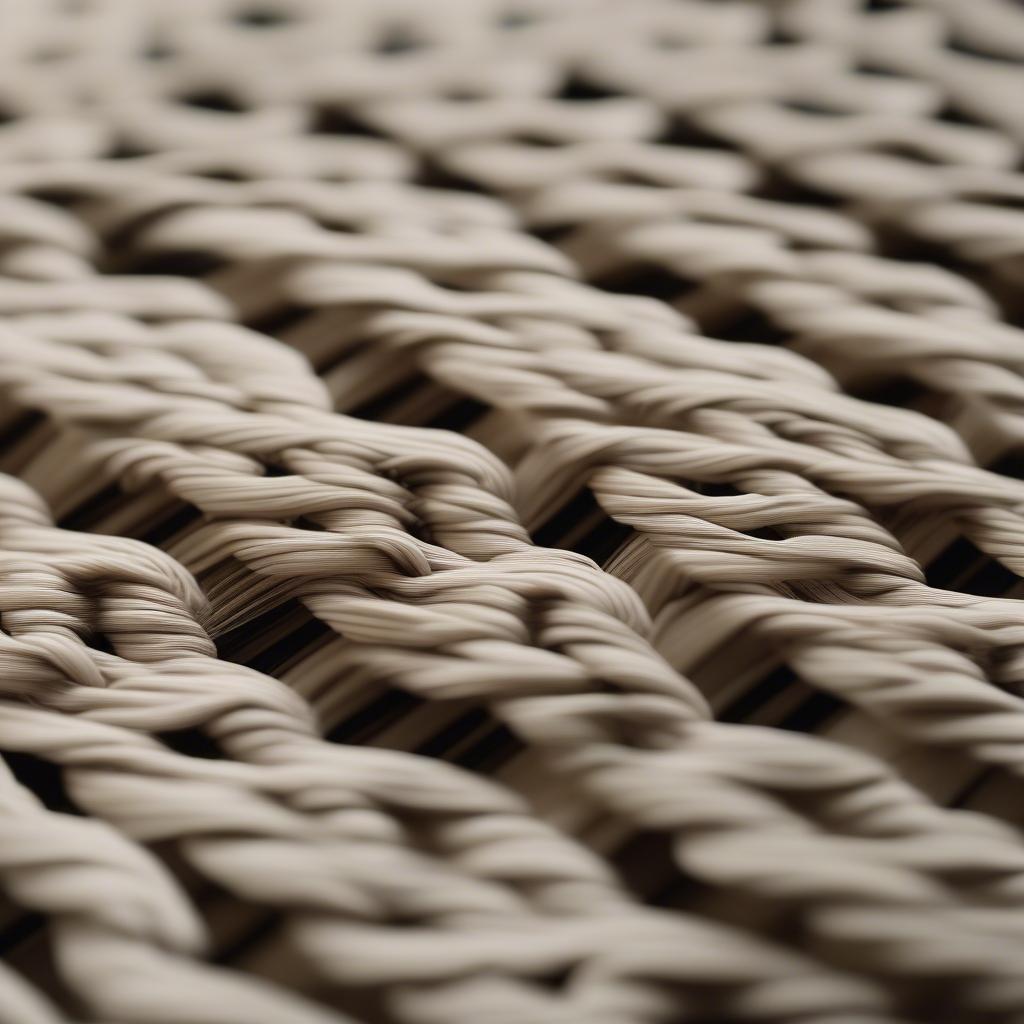Weave Chair
Weave a Chair Seat: A Comprehensive Guide
Weaving a chair seat can transform a tired piece of furniture into a beautiful and functional work of art. Whether you’re a seasoned craftsperson or a curious beginner, this guide will provide valuable insights and techniques to help you master the art of chair seat weaving. From choosing the right materials to executing various weaving patterns, we’ll cover everything you need to know to Weave A Chair Seat that’s both comfortable and aesthetically pleasing.
Understanding the Basics of Weaving a Chair Seat
Before diving into the weaving process, it’s crucial to understand the fundamentals. Choosing the right materials, preparing the frame, and selecting a weaving pattern are all essential steps that contribute to a successful project.  Essential Materials for Chair Seat Weaving
Essential Materials for Chair Seat Weaving
Choosing Your Weaving Material
There’s a wide array of materials available for weaving chair seats, each with its own unique properties and aesthetic appeal. Natural fibers such as rush, reed, seagrass, and paper cord offer a traditional look and feel. They are also eco-friendly and biodegradable. Synthetic materials, such as nylon webbing and plastic cord, are known for their durability and resistance to wear and tear. Consider the style of your chair, the desired level of comfort, and the overall aesthetic you’re aiming for when making your selection.
Preparing the Chair Frame
A well-prepared frame is the foundation of a sturdy and attractive woven chair seat. Before you begin weaving, inspect the chair frame for any damage or loose joints. Repair or reinforce any weak spots to ensure the frame can support the woven seat. Clean the frame thoroughly to remove any dust or debris that might interfere with the weaving process.
Selecting a Weaving Pattern
The weaving pattern you choose will greatly influence the final look and feel of your chair seat. From simple checkerboard patterns to more intricate designs, there’s a pattern to suit every skill level and aesthetic preference. how to weave chair seat provides further insight into various weaving patterns and techniques. Beginners might start with a basic pattern and gradually progress to more complex designs as they gain experience.
Step-by-Step Guide to Weaving a Chair Seat
Now that you’ve covered the basics, let’s delve into the practical steps involved in weaving a chair seat.  Step-by-Step Chair Seat Weaving Process
Step-by-Step Chair Seat Weaving Process
- Measure and Cut Your Material: Accurately measure the dimensions of the chair seat opening and cut your chosen material accordingly, leaving extra length for weaving and securing the ends.
- Warping the Frame: This involves creating the vertical foundation of your woven seat. Wrap the material vertically around the frame rails, ensuring even tension and spacing.
- Wefting the Seat: Once the warp is complete, begin weaving the horizontal strands, known as the weft, through the vertical warp strands.
- Securing the Ends: Once you’ve woven the entire seat, securely tuck in and tie off the loose ends of the material to prevent unraveling.
Tips and Tricks for a Professional Finish
- Maintain Consistent Tension: Maintaining even tension throughout the weaving process is crucial for a neat and professional finish. Too much tension can warp the frame, while too little tension can result in a loose and saggy seat.
- Use a Weaving Needle: A weaving needle can help you navigate tight spaces and weave the material more efficiently, especially for intricate patterns. how to weave a chair seat with baling twine demonstrates the use of a weaving needle with a specific material.
- Practice Makes Perfect: Like any craft, weaving takes practice. Don’t be discouraged if your first attempt isn’t perfect. With each project, you’ll gain valuable experience and refine your technique.
“The beauty of weaving lies in the intricate interplay of materials and patterns. With patience and practice, anyone can create beautiful and functional woven pieces.” – Amelia Reed, Master Weaver
Addressing Common Challenges
Weaving a chair seat can present some common challenges, especially for beginners. Understanding these potential issues can help you troubleshoot and achieve a successful outcome. how to weave a chair seat provides helpful tips and solutions for overcoming common weaving challenges.
“Don’t be afraid to experiment with different materials and patterns. It’s through experimentation that we truly discover our creative potential.” – John Willow, Furniture Designer
Conclusion
Weaving a chair seat is a rewarding craft that allows you to create functional art. By following the steps outlined in this guide and practicing your technique, you can transform any chair into a unique and beautiful piece. So, gather your materials, choose your pattern, and start weaving!  A Beautifully Woven Chair Seat
A Beautifully Woven Chair Seat
FAQ
- What is the best material for weaving a chair seat?
- How do I measure my chair seat for weaving?
- What are the different types of chair seat weaving patterns?
- How do I fix a broken strand in my woven chair seat?
- Where can I buy chair seat weaving materials?
- What tools do I need for weaving a chair seat?
- How long does it take to weave a chair seat?
Common Chair Seat Weaving Scenarios
- Replacing a worn-out woven chair seat.
- Updating the look of an old chair.
- Creating a custom-designed chair seat.
- Repairing a damaged woven chair seat.
Related Articles & Questions
- Can I weave a chair seat with different materials?
- How do I choose the right weaving pattern for my chair?
- What are the benefits of using natural fibers for chair seat weaving?
- how to weave a chair seat with paper rush
- how to weave a chair seat with webbing
Need support? Contact our 24/7 hotline: +84 388 951 999. We’re located in Hanoi, Vietnam and Tech Avenue, Suite 12, San Francisco, CA 94105, USA.
